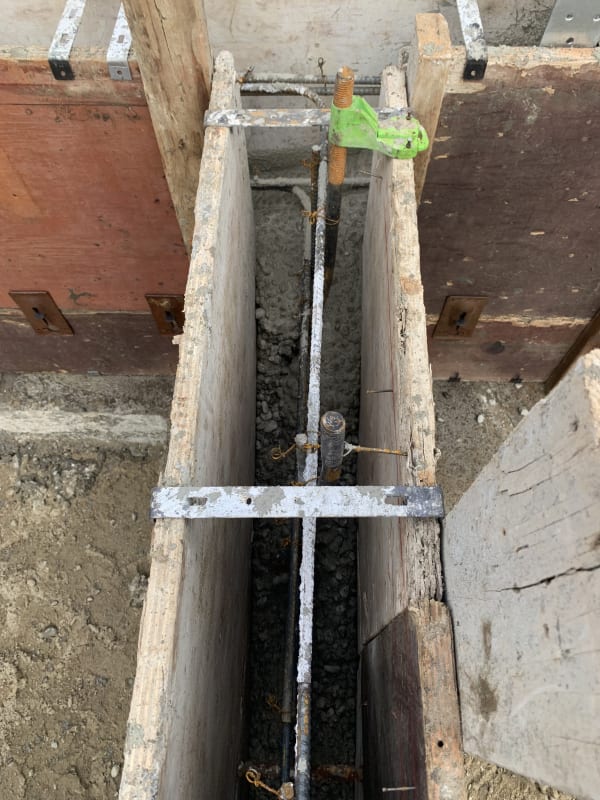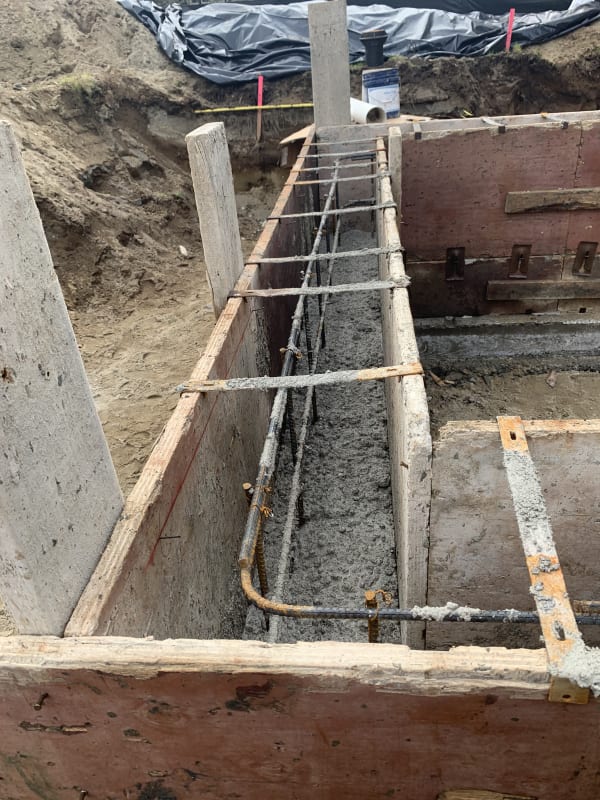Wandering Wallaby
Structural
Hello all, the contractor on one of my projects had an issue with the concrete company and was only able to pour about a foot height of 3ksi concrete within 8" wide forms. The stems were to be anywhere from 18"-30" tall throughout the two-story wood framed residential house with 1'-4" x 0'-8" concrete footings at -18" frost line. Now there is a cold joint throughout the project at the stem walls. There appears to be more than enough room to embed the anchor bolts, and any Simpson HDU style holdowns have threaded rods embedded down into the footing. The surface is rough to where shear transfer doesn't appear to be an issue. My concerns are water infiltration at the cold joint, as well as several Simpson STHD14RJ strap-style holdowns that will now be immediately above the cold joint. Do you think those are valid concerns, and if so, would you agree that I require a bonding agent at the interface? The uplifts at the STHD are typically less than 3,000# and will still have the "hook" near the horizontal bar, so I'm not sure whether I should require them to drill and epoxy threaded rods for HDU style holdowns at those locations instead.
I appreciate any and all feedback.
Thank you.


I appreciate any and all feedback.
Thank you.


